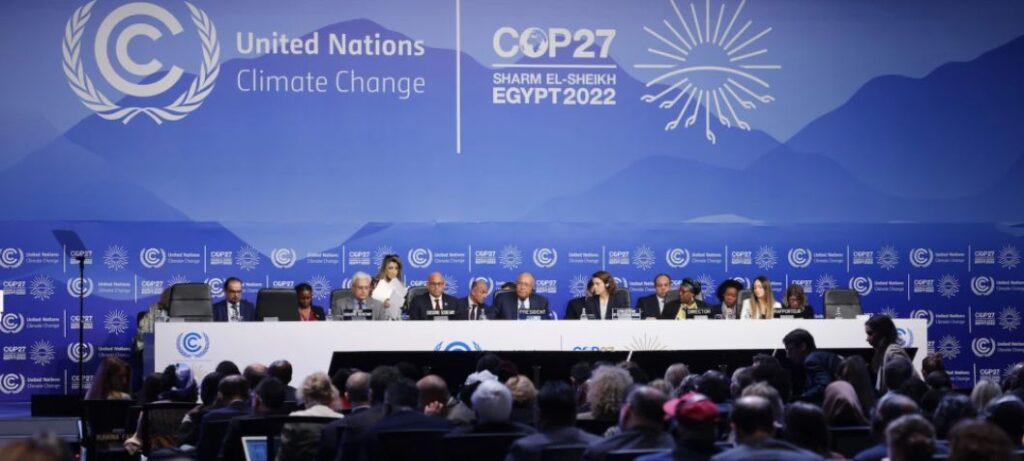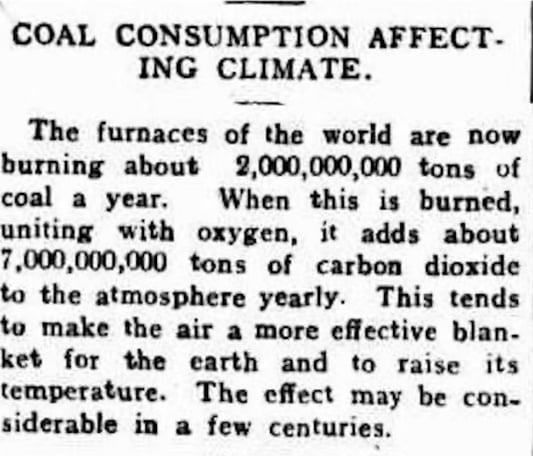COPOUT 27?
OPINION
by Rob McCann, Sustainability Manager
rob@southpacificsustainability.com.au
As a sustainability consultant, it might surprise you that over the years I’m paying less and less attention to conferences, symposiums, summits and the like (except of course the recent Sustainable Futures Festival!). Partly, it’s because I have a rapidly dwindling tolerance for nonsense as I get older. COP27 however, which will go for the next two weeks albeit is a little different. When a gathering of such enormous consequence takes place, even just in monetary terms, it may be worth paying at least some attention. This is true whether you are a farmer in Dungog or Darfur, a manufacturing company in Bangalore, or a global hedge fund manager. Let me save you some time and explain.
What, where and why
No less than 200 Governments have been invited to Egypt this year to yet again another gathering to attempt to steer the world’s emissions trajectory downward, even if only slightly. In a nutshell, this is to limit average global warming to 1.5 degrees above pre-industrial levels, and to direct capital to where it’s needed so that the developing world can weather the coming storm, while also ensuring wealthy countries don’t become less wealthy. Australia is sending a minister (Chris Bowen), the UK’s PM has just changed their mind and has decided to go, Vladimir Putin is busy with something at the moment but Russian delegates will be there. China is yet to RSVP. I won’t explain the background or intricate details of COP27 here, but a good overview for beginners can be found here. Let me explain whether it’s important, and what it means for you as a resident and ratepayer of this planet.

The first day of the United Nations Climate Change summit. Source: foreignpolicy.com
Emissions, they keep on rising

Long story short, all this sprung many decades ago from early observations of global carbon emissions and the famous hockey stick curve (more on this in another article). Scientific institutions produced ever more lines of data, momentum grew and reached global coalitions of governments. Appreciate the quote (right image) from a NSW Mining Journal. This was written in 1912, the year the titanic sank, 110 years ago2.
Emissions continued to grow in earnest, with the use of satellites and a global network of monitoring stations painting an extremely clear picture of this prediction, though the timeframe discussed in 1912 was way off. Margaret Thatcher made an impactful speech3 in 1989 talking about the threats posed by rising emissions and suggested global action. Emissions continued to rise. About three years later in 1992, the a UN Climate Agreement was signed by multiple countries known as the Conference of the Parties, or COP (hence, COP27). Despite all these speeches, global accords, kodak handshakes and announcements, emissions continued to rise ever higher and faster.
The Intergovernmental Panel on Climate Change, or IPCC, provided multiple global literature reviews on the latest data and science covering the state of earth’s life support systems. Each year producing a more robust (and dire) synthesis on what is being observed and what needs to happen. The same year the 6th IPCC assessment was released (2021), the most sobering of all in my opinion, we witnessed the highest annual leap in emissions growth in human history4,5. Today, the earth’s atmospheric carbon dioxide is 419ppm6 ,the highest in 3 million years7.
If not now, when?
China is responsible for the lion’s share of emissions as well as growth in emissions, more than double the next highest contributor, the US, whose emissions are flatlining8 – positive news. India’s emissions growth are second only to China. These countries together hold just under half of the world’s population, and their footprint may well continue to grow as their populations grow wealthier and demand many of the pleasures that we in the west have enjoyed for decades, like plentiful meat and dairy, large cars, air travel and larger houses. Who can begrudge them of that?
So should wealthier countries do the heavy lifting? What will the opportunity cost of action be when a country is trying to raise its people out of poverty while weaning off fossil fuels? Should the countries who racked up the biggest emissions bar tab pay it or leave it to the newcomers? This is the moral dilemma which plagues COP27 and all others before it, and why it is so darn difficult to cut a good deal. There have indeed been some positives, many binding agreements, and huge amounts of capital have been deployed, with a target of USD100bn next year headed to the developing world. Things appear to be moving in the right direction. The problem is that the speed is way too slow. Further, as of 2 weeks ago, out of 193 attending countries who were asked to prepare and submit climate plans in advance, only 24 have done so. We have tried this conference 26 times before and emissions are still rising.
Most important COP ever?
It’s fitting that this year’s conference is in Africa, where in the east about 20 million people are facing food insecurity because of drought9. The global south, which has been battered during COVID and is most vulnerable to climate shocks, once again get a raw deal this century if they don’t get a big enough seat at the table. The developed world is not spared either, though. The world’s energy system is a mess. Germany, perhaps the most technologically and industrially advanced country on the planet, is facing a very dire winter indeed due to Nord stream 1 & 2 being severed. Rampant energy price inflation across the UK and Australia continues. Coal, which Australia still largely depends on for its energy, has gone up 6x in price since this time in 201910. All while irreversibly changing the chemistry of our atmosphere. This cannot go on.

Are we screwed?
It’s dire, it’s not hopeless, as the saying goes. The atmosphere doesn’t have or care about borders. Satellites don’t have political opinions. If we are going to get anywhere there needs to be collaboration across countries, top-down, sideways, and bottom-up supply and demand. If COP27 helps drive that, that’s great, but I’m not holding my breath and waiting for governments alone to sort this out for us. It’s also very important to pay attention to what people do, not what they say. Follow the money. Pay attention to what the satellites and monitoring stations are telling us. Look at what’s happening in the energy market.
While the world’s leaders are flying to Egypt in private jets for weeks of discussions and dealmaking, I’m quietly installing solar on my roof, swapping out my hot water system, raising my son as best I can, and selling my diesel car for an EV – as are millions of others around the world at almost exponential levels. Innovation continues at mind boggling rates. Capital markets are making a sharp turn towards renewables and carbon sequestration. Even though we are practically out of time and COP27 is just one piece of the puzzle, we may just surprise ourselves and get there. Stay positive, do what you can within your sphere of influence and watch this space.
Sources:
- COP27 overview article – https://www.bbc.com/news/science-environment-63316362
- Carbon dioxide article – 1912. The Braidwood Dispatch and Mining Journal, National Library of Australia. Referenced in the conversation https://theconversation.com/for-110-years-climate-change-has-been-in-the-news-are-we-finally-ready-to-listen-188646
- Margaret Thatcher speech – https://www.margaretthatcher.org/document/107817
- 2021 saw highest emissions leap in history – https://www.iea.org/news/global-co2-emissions-rebounded-to-their-highest-level-in-history-in-2021
- Climate change – atmospheric carbon dioxide. https://www.climate.gov/news-features/understanding-climate/climate-change-atmospheric-carbon-dioxide
- Current atmospheric CO2 is 419 ppm https://climate.nasa.gov/vital-signs/carbon-dioxide/
- Welcome to the Pliocene. https://news.climate.columbia.edu/2014/04/22/crossing-400ppm-welcome-to-the-pliocene/
- 20 million people facing food insecurity due to drought https://news.un.org/en/story/2022/04/1116442
- Australian Coal Price – https://ycharts.com/indicators/australia_coal_price_imf
